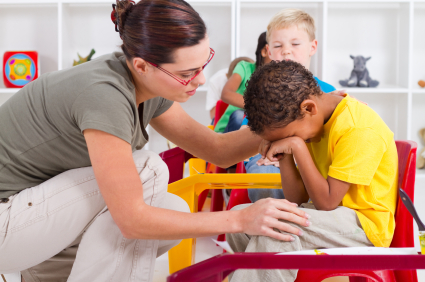
Take a moment to imagine that you are on the playground or in the hallway and you see two students who have clearly been in some sort of altercation. Instead running to an adult, or an adult running to them, they are standing with two other students, working through their problems. Maybe this sounds too good to be true, but if you have a peer mediation program at your school, you know how powerful and practical this conflict resolution tool is. Peer mediation can be a great way to create an environment of acceptance, respect, understanding, and inclusion in your school. It will help you and your students work towards preventing school bullying.
Peer mediation involves specially-trained students being available to their fellow students when they need help working through a conflict. The mediators do not decide who is right or who wins, but rather help students share their sides of the story and guide them toward a solution. There are a number of steps that peer mediators take when helping other students work through a conflict. First, they set ground rules and then each student shares his or her side of the story. Afterward, mediators repeat back what they understand each student wants and needs, resolution options are explored and evaluated, and finally a formal agreement is reached.
Peer mediation encourages all who are involved to be independent problem-solvers, which is an important skill for our students today. It also communicates to them that the adults trust in their ability to solve their own problems. Additionally, it causes students to interact across age groups and friendship groups, which increases empathy and understanding and reinforces an anti-bullying philosophy.
Peer Mediation is not just for students. It can be a useful tool for teachers, administrators and principals as well. The same conflict resolution tools that are used to implement such a program for students can be helpful in diffusing stressful situations and disagreements among faculty members. If you start a peer mediation program in your school, you might even learn a few things that you can then use in your personal life.
Any time is a great time to get started with a mediation program. The sooner you implement your anti-bullying campaign, the faster you can work toward creating a safe school environment. If you get a peer mediation program going soon, you might even experience the positive impact by the end of the school year.
About the Author: Saul Wagner is an educator and frequent contributor to Hertz Furniture’s School Matters Blog. His areas of expertise include educational leadership, school technology, and classroom ergonomics.
